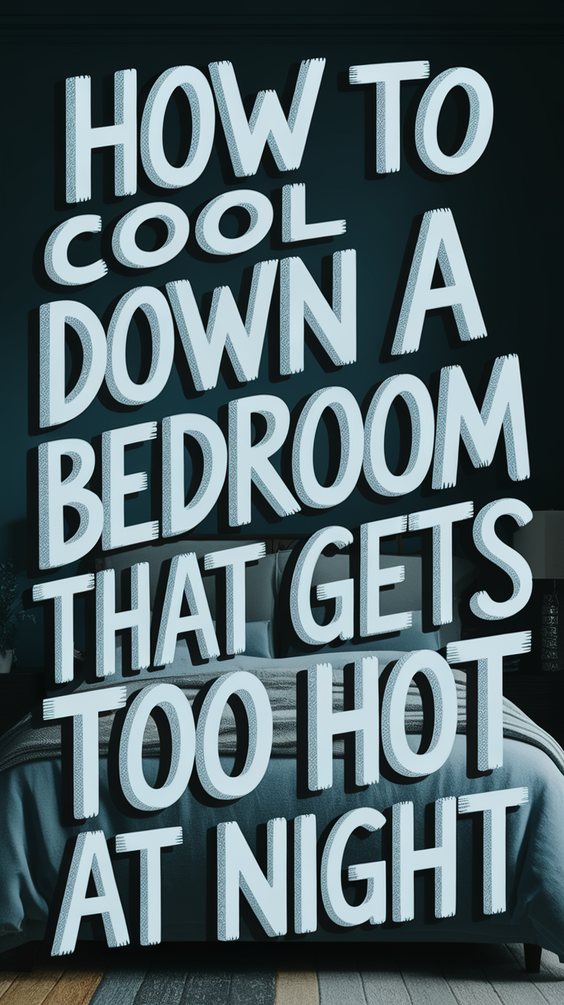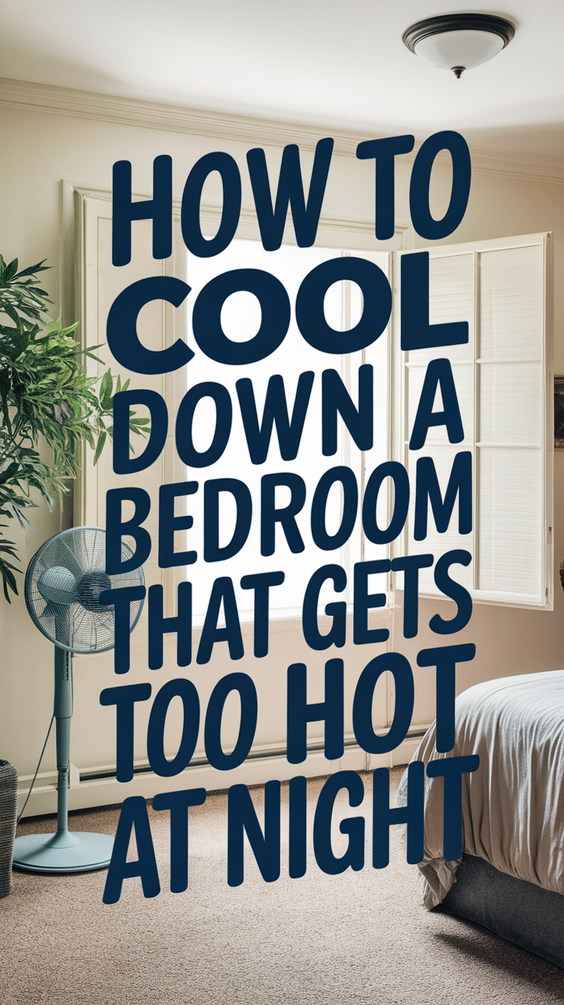How to Cool Down a Bedroom That Gets Too Hot at Night in 2025

Why Your Bedroom Gets So Hot at Night
Do you often wake up feeling like you’re in a sauna despite having the window open? If so, you’re not the only one. Many Americans tend to report that their bedrooms reach temperatures higher than 75°F during summer nights. This is even more common in poorly insulated houses and top floor apartments. With the ever evolving climate patterns, this is bound to become more frequent.
There are many reasons as to why that happens, for example, the lack of proper airflow, high levels of humidity, heat retained from sunlight, or even the electronics that you use. Let’s dive into the causes so that you are able to regain your comfort.
Thermal mass – Walls, ceilings and floors retain heat during the day and release it at night.
Poor ventilation – Closed doors and windows trap warm air because they prevent it from circulating.
Improper insulation – Structurally weak walls and roofs allow summer heat to enter and get trapped.
Heat producing devices – TVs, computers, and even chargers emit additional heat.
How Heat Affects Your Sleep Quality
The sleep foundation suggests a bedroom temperature of 60°F to 67°F for optimal comfort, especially for sleep. It is safe to say that most bedrooms are unlikely to hit those numbers, particularly during the summer.
The Consequences of Overheating
You sweat more than normal and struggle accessing deep sleep.
Sleep interruption becomes more frequent and persistent.
Feeling sluggish and irritable the next day becomes the norm.
Excessive heat does not only impact your sleep. It damages health, productivity, and emotional stability. Avoiding overheating means more energetic mornings and less aggravated nights.
Maintaining a Healthy Room Temperature
It’s not always uncomfortable room temperatures that demand AC units. Sometimes, simply optimizing the existing setup to improve airflow and ventilation can be the difference.
Cross-Ventilation Strategies
Open windows on opposing sides of the room or the house for maximum breeze creation.
Use door stoppers to facilitate air movement between rooms.
Low window openings alongside fan usage can improve airflow.
Proper Ventilation Techniques
Not every brand of fan is made equal, some are designed purposefully for improved air circulation. Simple box fans tend to have the same air circulation capability as pedestal fans, and will not offer any benefits. Strategically placing pedestal or oscillating fans at windows can encourage cooler night air intake.
💡 Pro tip: Set your fan to face out of the window in the evening—it will pull hot air out, making room for cooler air to enter.
Best Types of Bedroom Fans for 2025
Let’s compare the most effective fan options for night cooling:
| Type | Noise Level | Energy Use | Cooling Power | Best For |
|---|---|---|---|---|
| Oscillating pedestal fan | Low | Very Low | Moderate | Medium rooms |
| Ceiling fan with reverse mode | Very Low | Low | High | Rooms with high ceilings |
| Window fan (reversible) | Moderate | Low | High | Cross-ventilation setups |
| Tower fan with air filter | Low | Medium | Moderate | Allergy-prone users |
No matter your choice, ensure you clean your fan regularly—dust can block airflow and spread allergens.
Stop Heat Before It Enters
Stopping heat creep at the source—your windows—is arguably the most effective strategy.
Use Heated Reflective Window Treatments
Consider using thermal blackout curtains or cellular blinds. The U.S. Department of Energy reported thermal window treatments can reduce heat gain by as much as 33%.
Morning: Close curtains to block the sun from pre-heating the room.
Evening: Part windows and curtains when temperatures are relatively cooler outside.
Easy and Affordable DIYs
Aluminum foil or reflective window film.
Cardboard fabric temporary blackout panels.
Velcro light-controlling shades.
Change to Lightweight Summer Pajamas and Bedwear
You might not realize the amount of heat blankets retain.
Use sheets made of cotton, bamboo, and linen.
Replace comforters with light blankets.
Wash sheets often, as sweat and oils tend to get trapped within the fabric which increases the temperature.
Pajamas and other sleepwear need attention as well: incorporate lightweight, loose clothes made of breathable fabrics that wick moisture away from the skin.
❓What’s your go-to summer sleepwear? Let us know in the comments!
Cut Off The Heat Sources
Devices like TVs and laptops increase a room’s temperature at night without making a sound.
Look for smart cooling gadgets
Smart electricity has never been so easy and powerful, so, in 2025, we can expect to have advanced devices to cool our rooms.
Electricical devices aren’t the only modern solution to cooling. Growing plants, mirrors and other raw materials are an eco-friendly way.
Time saving cooling:
Some other advanced cooling devises are personal mini evaporative coolers which are ideal for shared spaces. They cool the air in the vicinity by water sprinkling.
Smart air sensors serve to monitor humidity and the air in the room. They ensure the most comfortable state for sleeping.
Plants like snake plants and peace lilies reduce the air temperature a little through transpiration.
Mirrors out of direct sunlight can reflect heat.
Clay pots and ceramic decor captures heat and releases it gradually over the course of the night.
Imagine Decor that cools you down and looks stylish? It’s a win-win.
Is Air Conditioning Needed At All Times?
Not really. AC units perform well, but may not always be practical or environmentally-friendly.
Pros:
Fast relief
Control the climate
Cons:
Costly to put in and operate
Can make the air too dry
Adds to your carbon footprint
Most of the time, a combination of passive and active cooling techniques is most effective—especially in cheaper in the long run.
Best Bedroom AC Units for Quiet, Efficient Cooling
If you do choose to install an AC unit, consider these options:
Portable Air Conditioners
Great for renters
Can be moved from room to room
Usually loud
Mini Split Systems
Low noise and energy-efficient.
Better for the long run
Higher initial cost

| Unit Type | Noise Level | Installation | Ideal For |
|---|---|---|---|
| Portable AC | Moderate | Plug-in only | Renters, guests |
| Window Unit | Low | DIY install | Small bedrooms |
| Mini Split | Very Low | Professional | Long-term users |
Mistakes That Keep Bedrooms Hot
You might be making the following tips mistakes:
Not opening the windows at night.
Using polyester sheets that retain heat.
Using electronics while sleeping.
Keeping the bed close to windows and radiators.
Correcting these hobbies can greatly minimize your temperatures overnight.
Summary – Curb Your ‘Bedroom Heat’ In 5 Easy Steps
Fans enhance airflow, and windows can increase cross-ventilation.
Use special curtains to block heat from entering during the day.
Put on PJs or switch to light fabrics and breatheable bedding.
Remove all devices that may emit heat.
Work with inexpensive cooling resources like ice, misting fans, and evaporative fans.
What Do You Think?
How do you keep your bedroom cool while sleeping? We’d love to hear your favorite tips or must-have products in the comments! You could be helping someone sleep better tonight.
Are you looking for more guides? Follow us for seasonal updates, tips from experts, energy-saving guides, and so much more.

